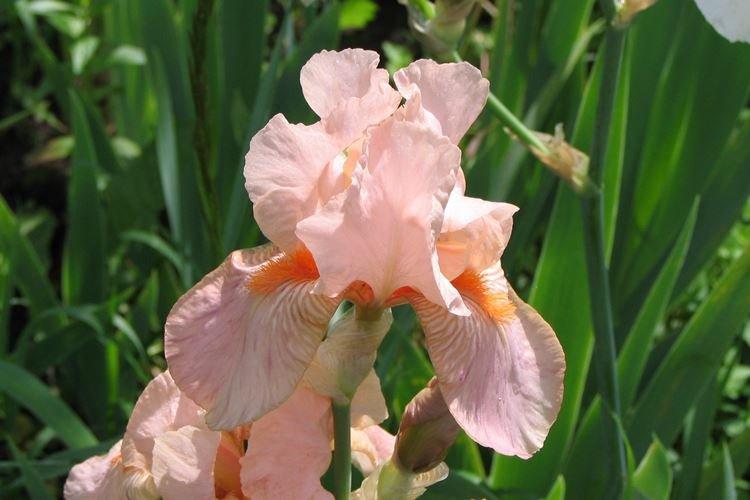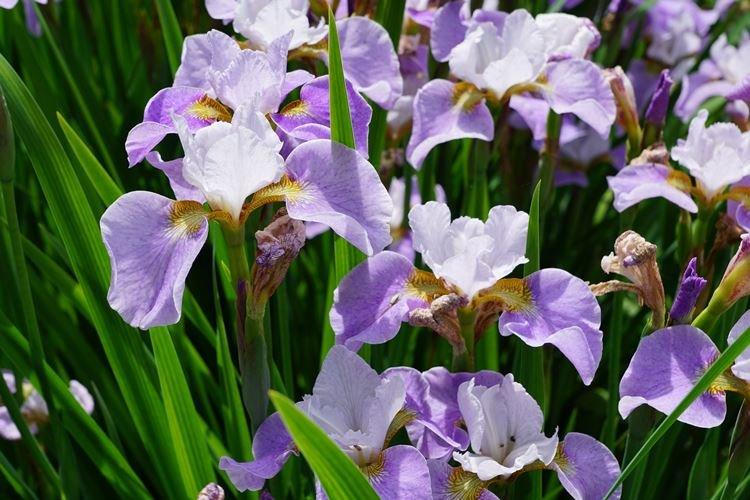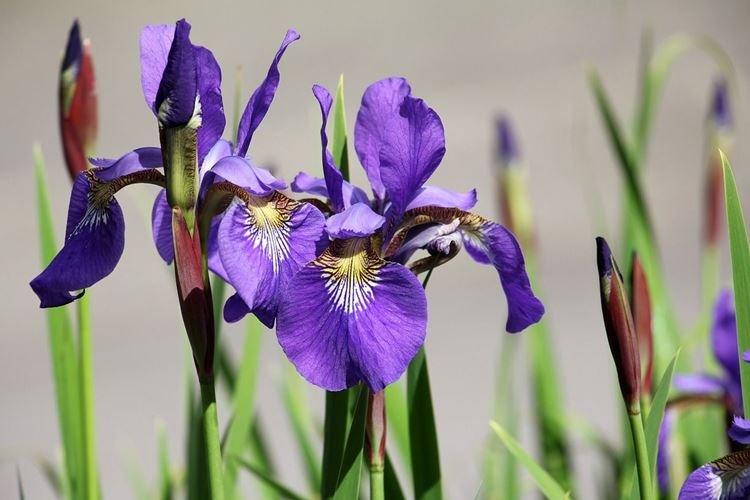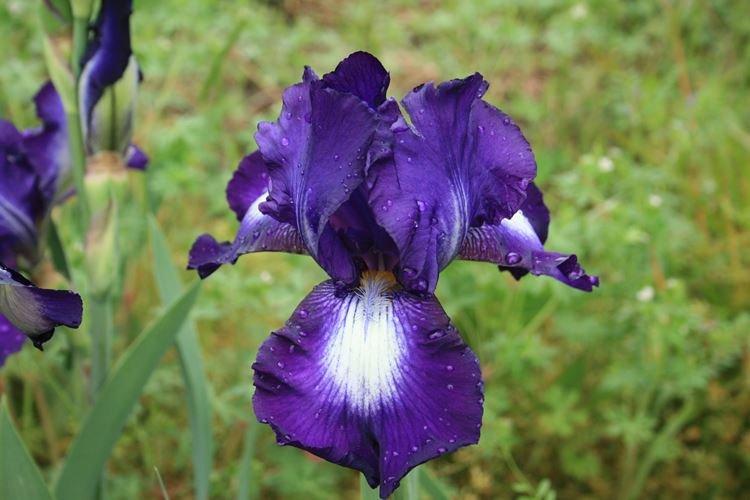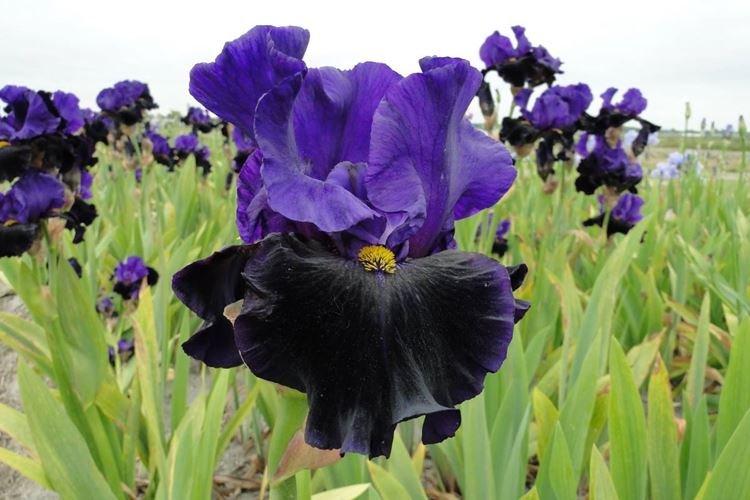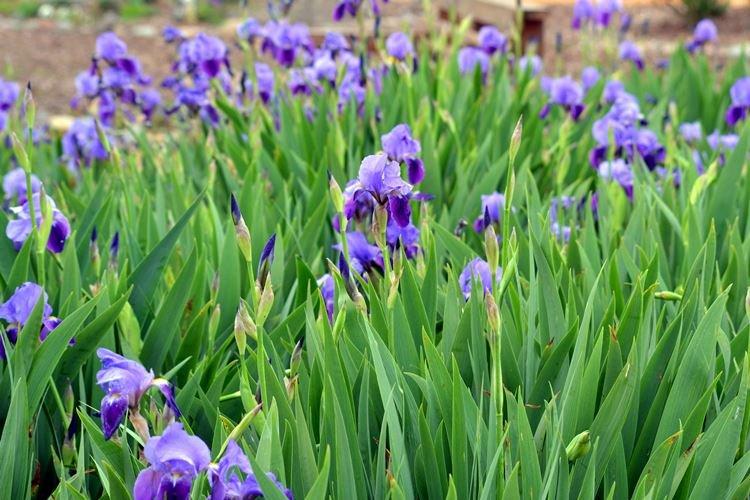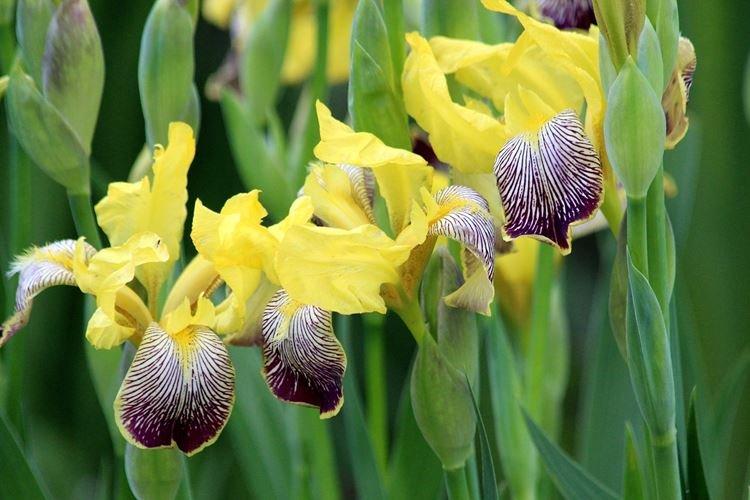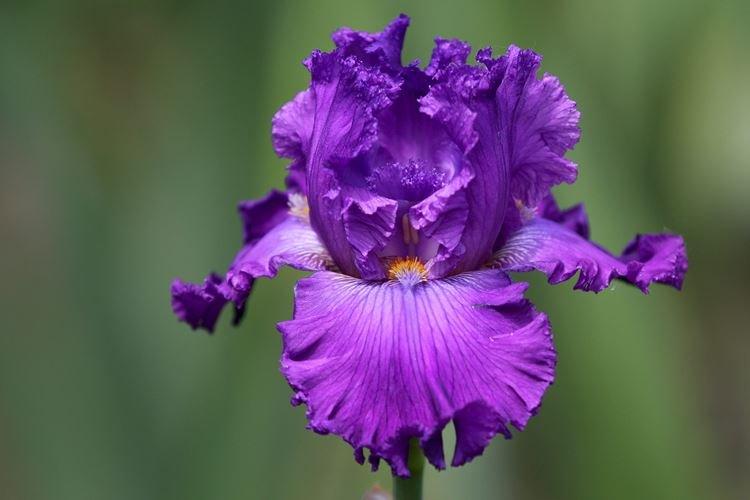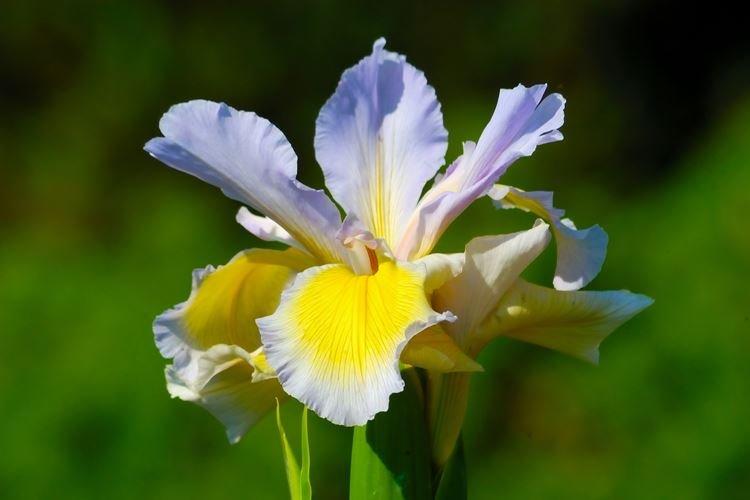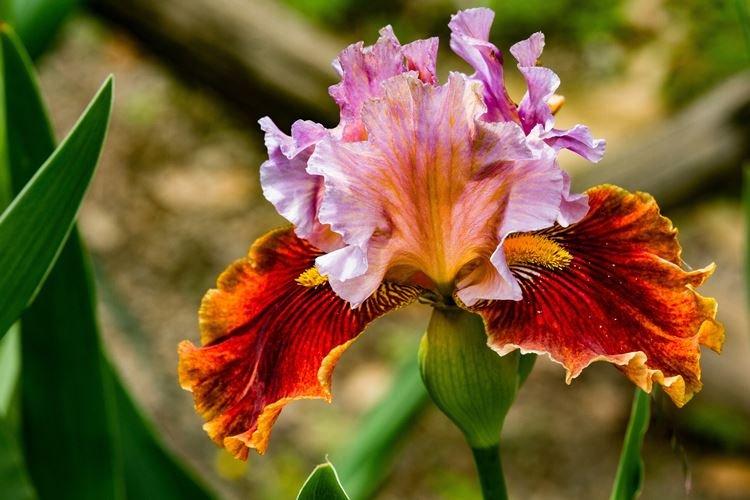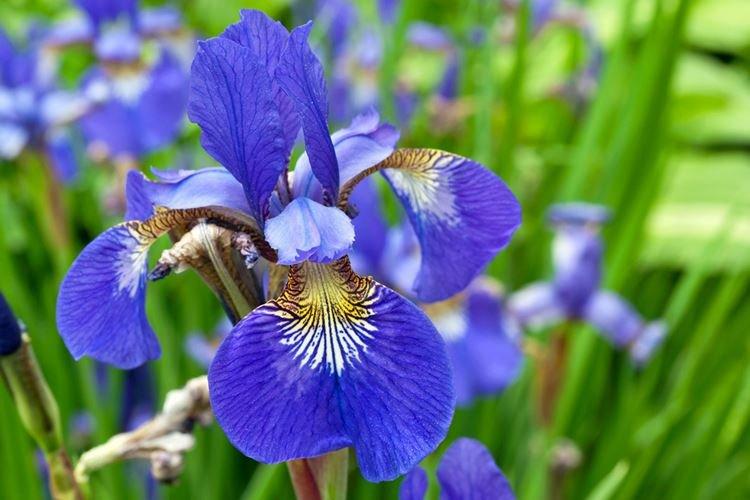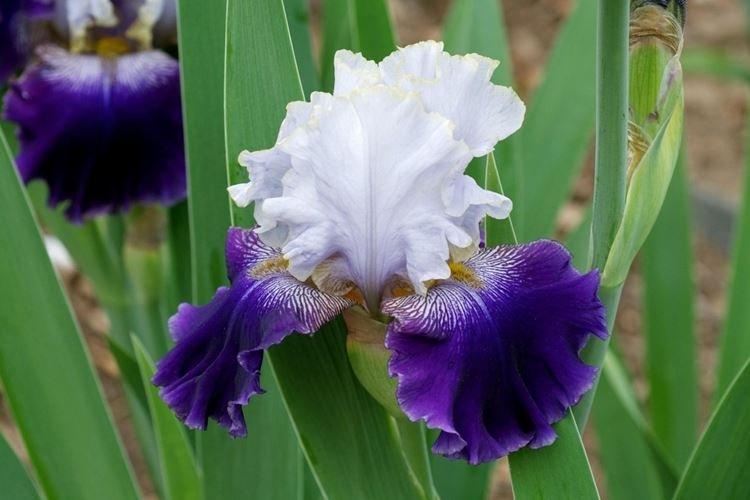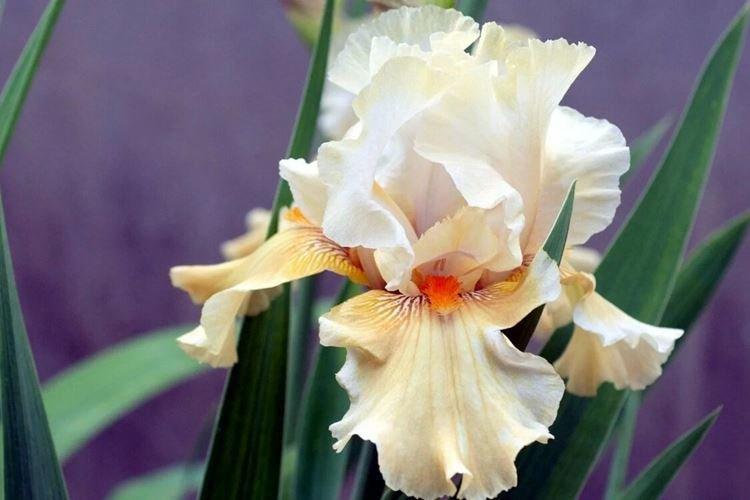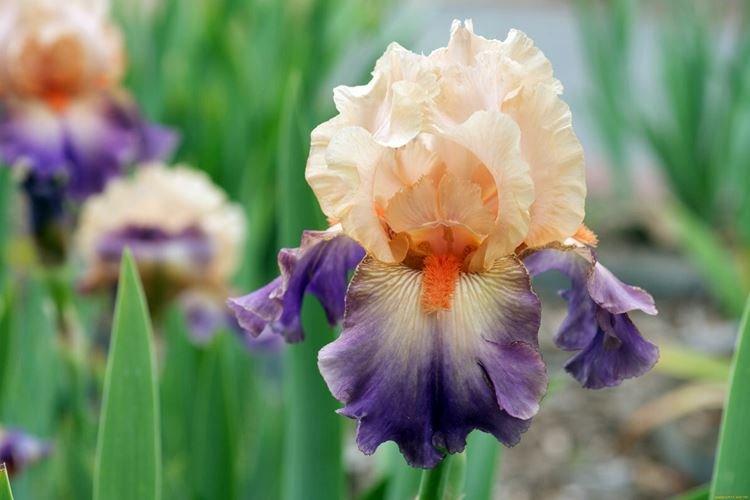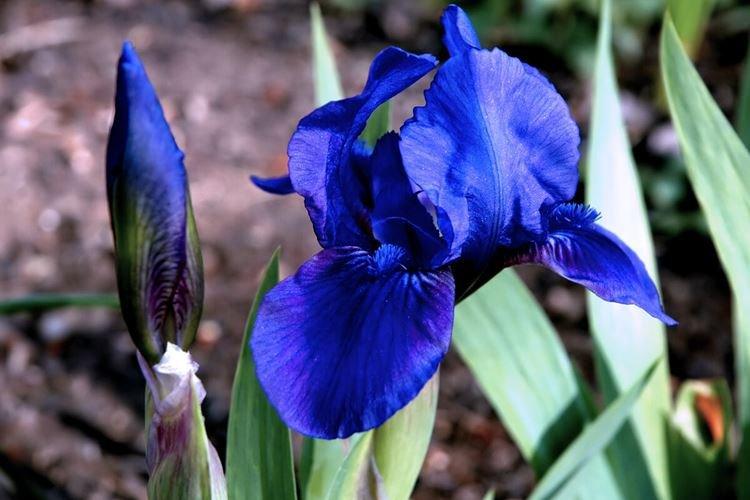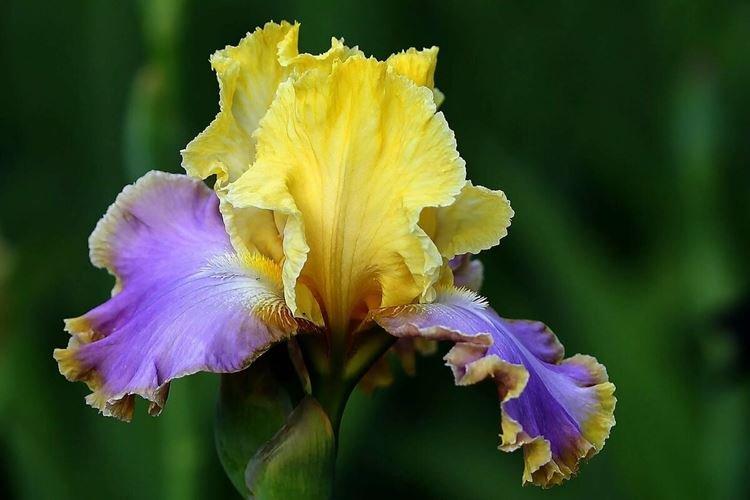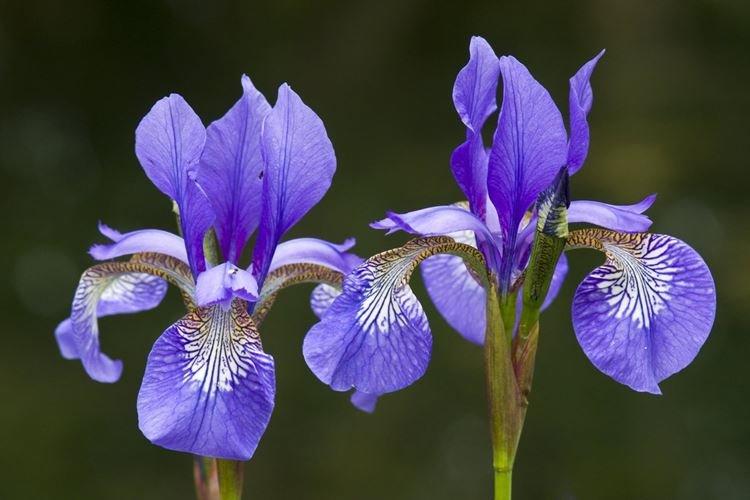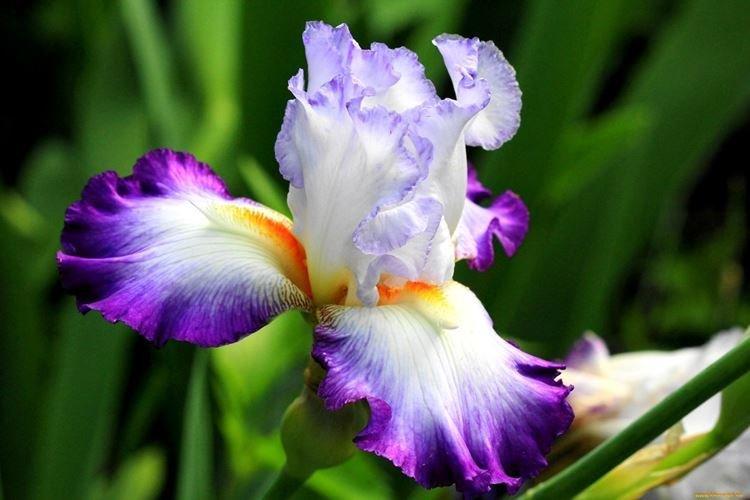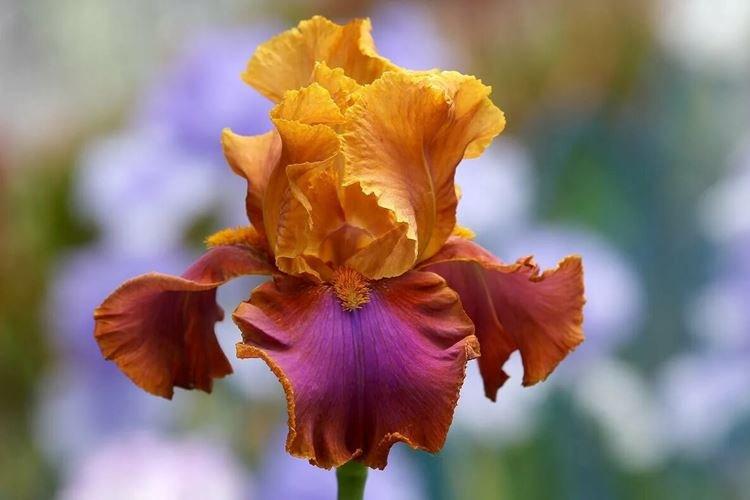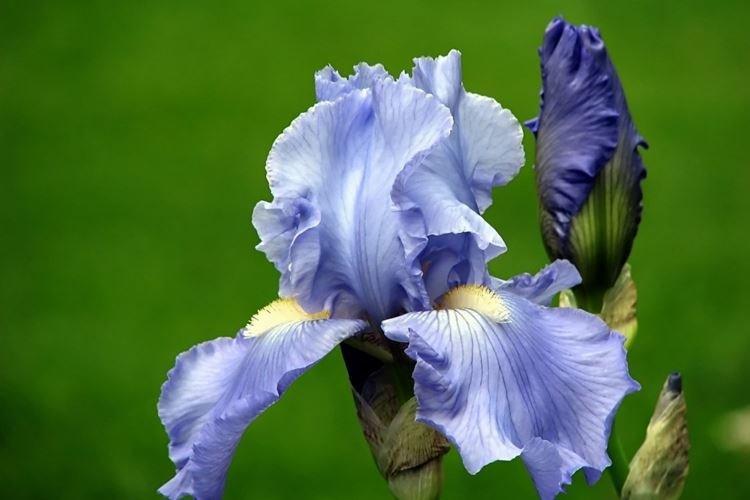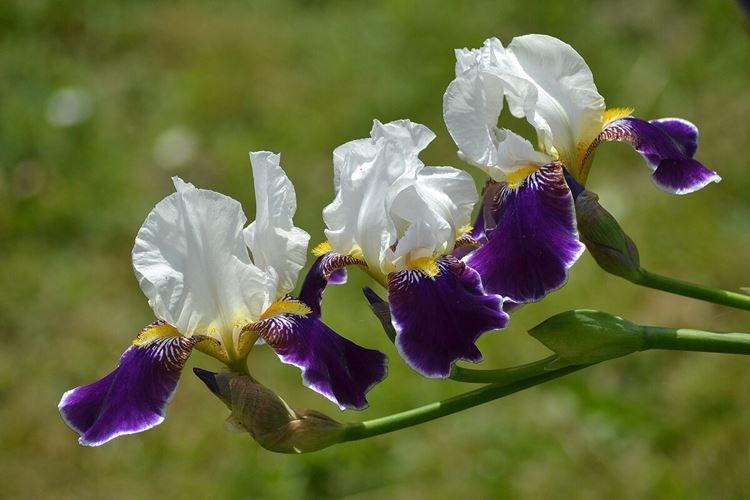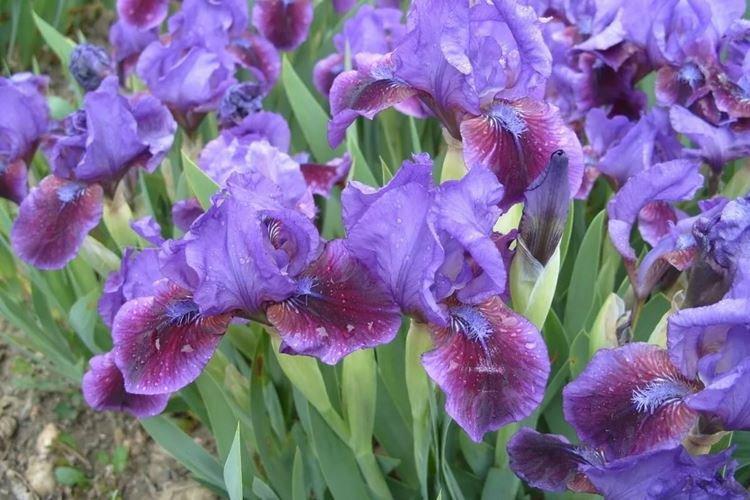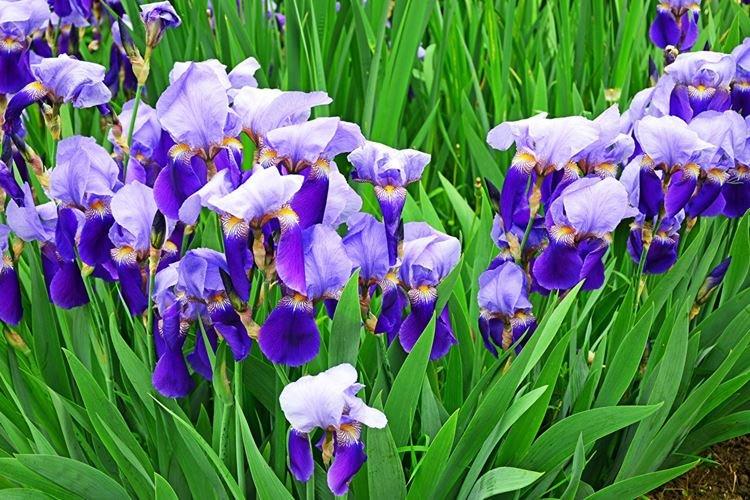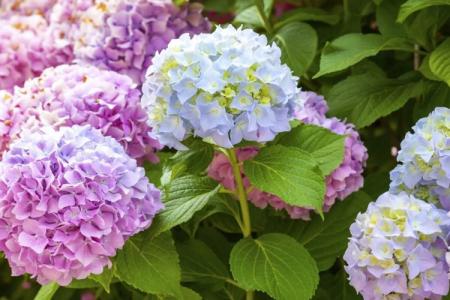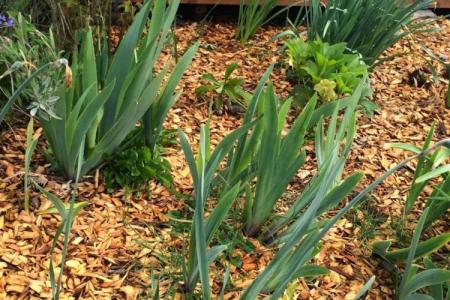
For the wonderful and unusual coloring, the Greeks named irises in honor of the goddess of the rainbow. And for their amazing shape, the people are sometimes called "northern orchids". According to legend, these flowers appeared by the sea, where they sprouted from the tears of a woman who was waiting for her husband-sailor during a storm. Like small lighthouses, bright buds illuminated the path. Today we will tell you about irises and their care!
general information
As soon as irises are not called in different regions - irises, cockerels, magpie flowers or plaits. They are notable for the bizarre shape of the petals, painted in all sorts of colors of the rainbow. The leaves are long and flat, xiphoid and waxy.
The flowers of irises are large and fragrant, of six petals: three are turned down and three more are fused and raised up. They grow singly, but occasionally there are more voluminous inflorescences. Irises are quite capricious in their care, but instead of a flower bed they will delight with unprecedented beauty from May to July.
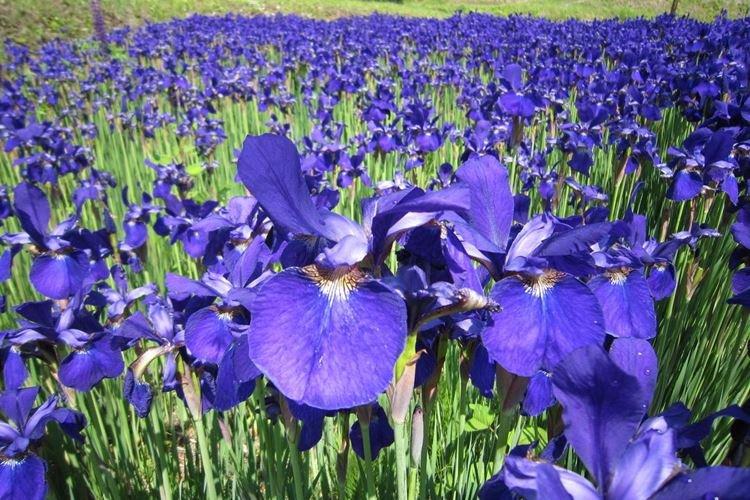
Types of irises
Irises are found all over the world, and there are hundreds of varieties. Among them there are bulbous and rhizomes - they differ slightly in the specifics of planting. Some varieties bloom twice - a second time closer to autumn.
Bearded iris
The most common in our country are Germanic or bearded irises, which got their name from the characteristic flower shape. Among them there are many interesting multi-colored varieties with smooth or wavy petals - Acoma, Bewilderbest, Baltic Sea and others.
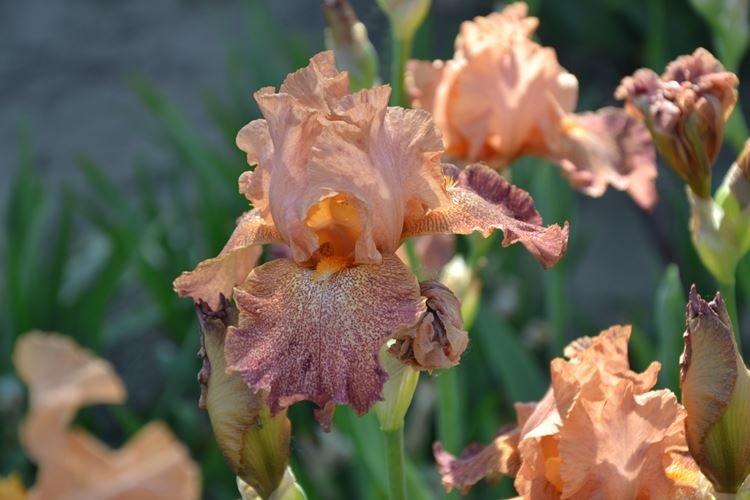
Siberian iris
The flowers of Siberian irises open up to 10 cm, and most often their shades are in the blue-violet range. This is a tall species - up to 80 cm, and it also has no characteristic iris scent at all.

Iris marsh
This is perhaps the only iris group that prefers moist, swampy soil. Flowers are most often of all shades of yellow, lemon or cream like Umkirch, Golden Queen or Flore Pleno.
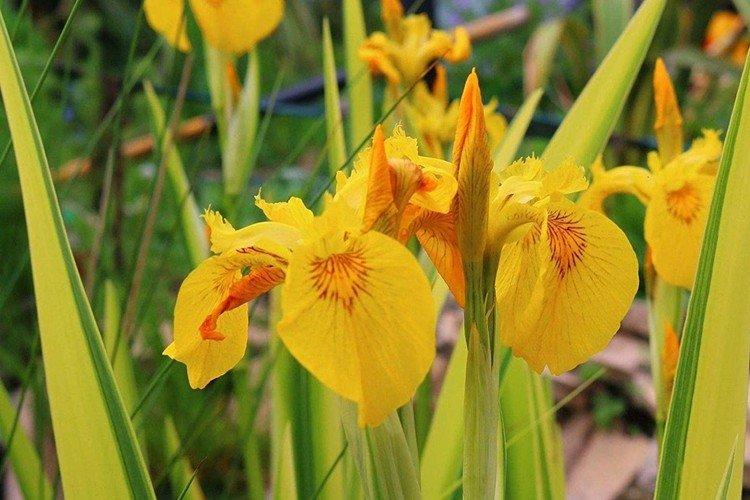
Japanese iris
Japanese irises, which are also called xiphoid, are dotted with large blue flowers up to 25 cm. In middle latitudes, the varieties Nessa-No-Mai, Vasily Alferov and Solveig perfectly take root.

Iris Spuria
Iris Spuria is similar to bulbous varieties, but its flowers are much larger. It easily tolerates drought and winter frosts, and in season it pleases with variegated multi-colored petals of the Transfiguration, Lemon Touch and Stella Irene varieties.
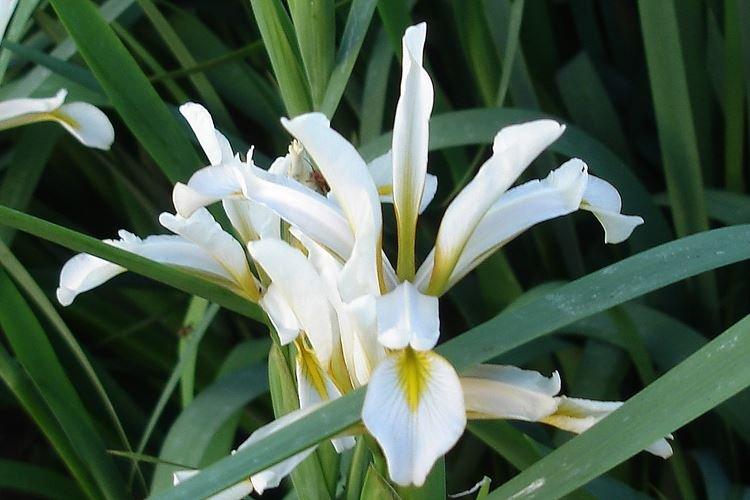
Iris care
The most important thing is to start looking after the irises in early spring, and then they will bloom on time and abundantly. As soon as the snow melts, remove the cover from the flower bed and gradually put it into daily routine.
Temperature and lighting
Irises love the sun and warmth, so flower beds can be safely planted in open sunny areas. But they do not tolerate drafts and cold winds, so take care of protection in bad weather.
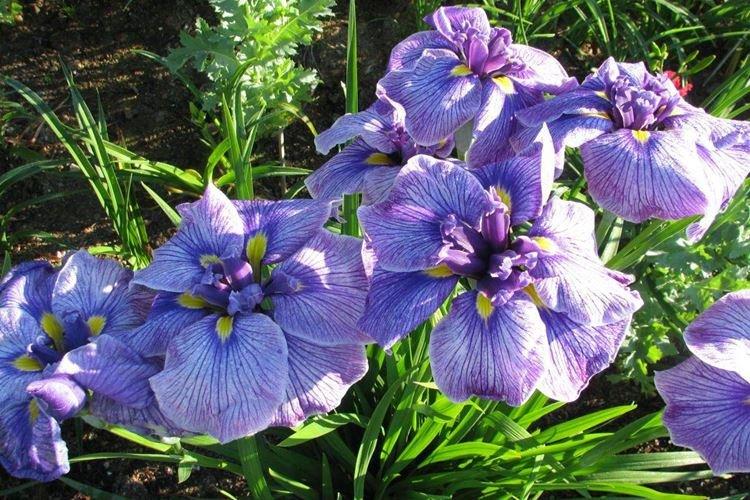
Watering
Irises are very fond of water, especially during intensive growth and flowering. In this case, do not overfill the root system, otherwise it will rot. We recommend moisturizing the soil between the plants at the rate of up to 20 liters per square.
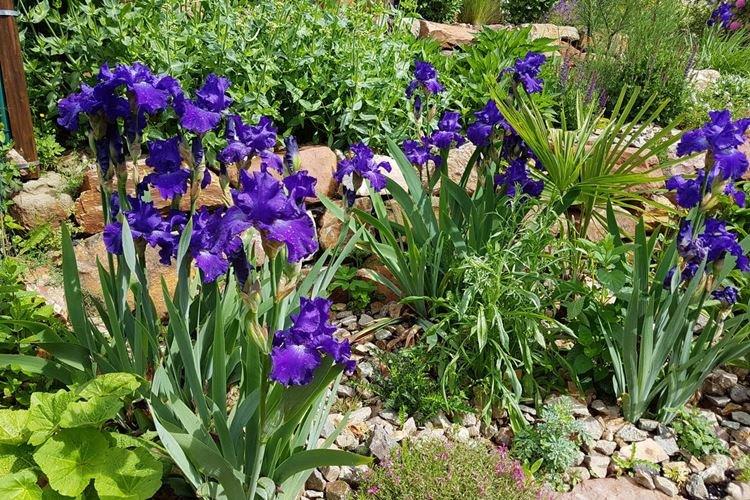
The soil
Before planting, pass the top layer of soil through a coarse sieve and treat it with antiseptics and combicides. Choose a soil that is neutral or slightly acidic. It is imperative to carefully loosen the aisles every one and a half weeks so that oxygen gets to the roots.
We recommend picking weeds by hand, because a normal working tool can damage the overgrown root. Irises do not tolerate the close occurrence of groundwater and need good drainage, with the exception of some marsh and Siberian varieties.
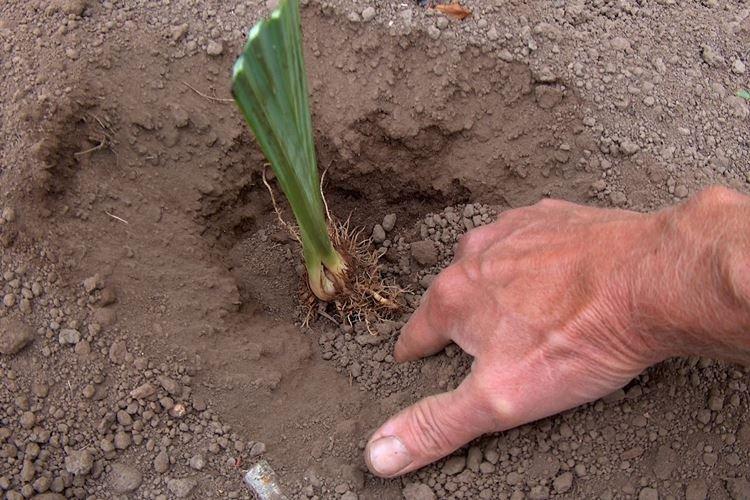
Fertilizers and feeding
Iris blooms profusely and brightly, so from early spring it needs regular feeding. First - 10 g of nitrogen per square, when the flowers begin to release leaves. After two weeks, add 15 g of potassium and phosphorus to the nitrogen, and during flowering, completely abandon nitrogen and increase the remaining dosages to 20 g.
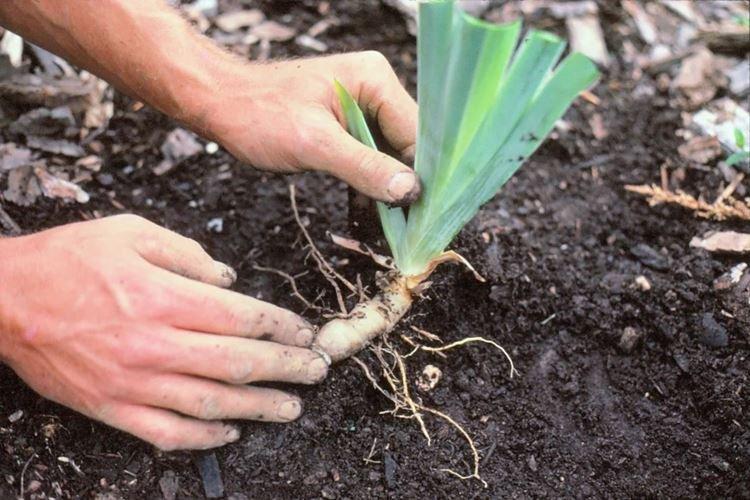
Transplant and reproduction
Irises are planted in spring from parcels bought in a store or harvested in the fall. Disinfect the planting material with potassium permanganate, treat it with a growth stimulant. Make a hole up to 25 cm, and in it there is a small mound to carefully spread the rhizome over it.
When planting iris, the root collar should be at soil level, and the distance between flowers should be from 30 to 50 cm, depending on the size of the variety. Rhizomes can be planted in early September, and bulbs from September to October. Fan the leaves to the north to shade itself on hot days. Prophylactic iris transplantation is not needed.
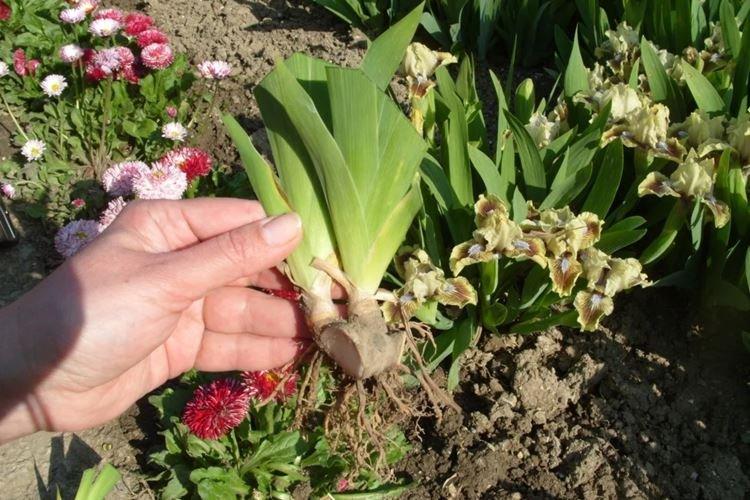
Pruning
When the plant has faded, remember to remove the peduncles so that they do not rot and spread disease. If the leaves turn yellow and dry, carefully cut them in a semicircle and treat with an antiseptic. Leave 10-15 cm of shoots for the winter, sprinkle open roots with soil and mulch with a thick layer of peat up to 10 cm.
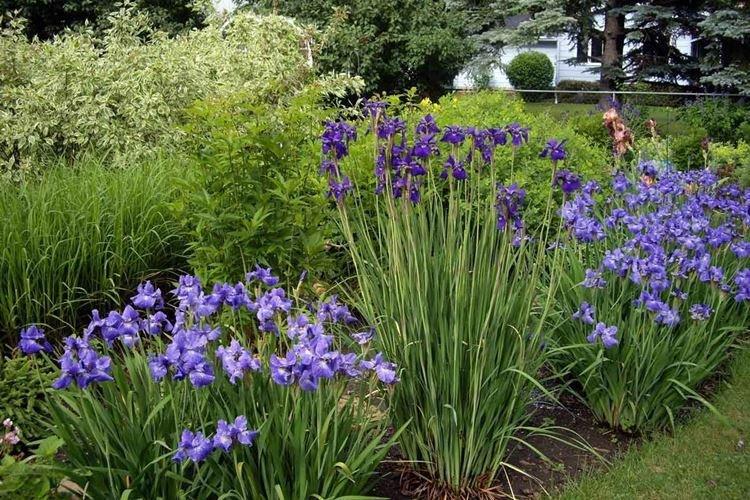
Winter storage
Heat-loving iris varieties will have to be dug up for the winter and stored separately. Dry the rhizomes, put them in a closed cardboard box, sprinkle them with peat or sawdust and leave them to winter on the balcony or in the basement. Moisture-loving varieties need to be pruned, disinfected and transplanted into pots.
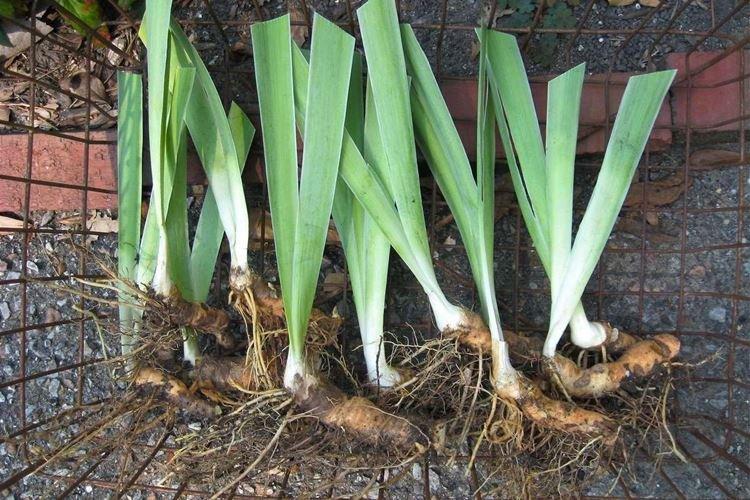
Pest and disease control
Irises are not too painful and most often suffer from root rot or bacteriosis. Tubers accumulate water, and in combination with waterlogged soil, frost or excess organic fertilizers, the result will not be long in coming. Therefore, regularly inspect the flower bed, especially after winter, to immediately remove damaged tubers.
Of fungal diseases, rhizoctonia and fusarium disease most often develop - especially in a cold rainy spring. For prevention, do not forget about seasonal spraying with fungicides and be sure to process the tubers before planting.
Thrips, aphids, iris flies and scoop butterflies love to eat with irises, and large tubers attract wireworms and grubs. Nematodes cause many diseases, complications and developmental delays. Be sure to dig up the soil at the beginning of the season, apply antiseptics and use insecticides.
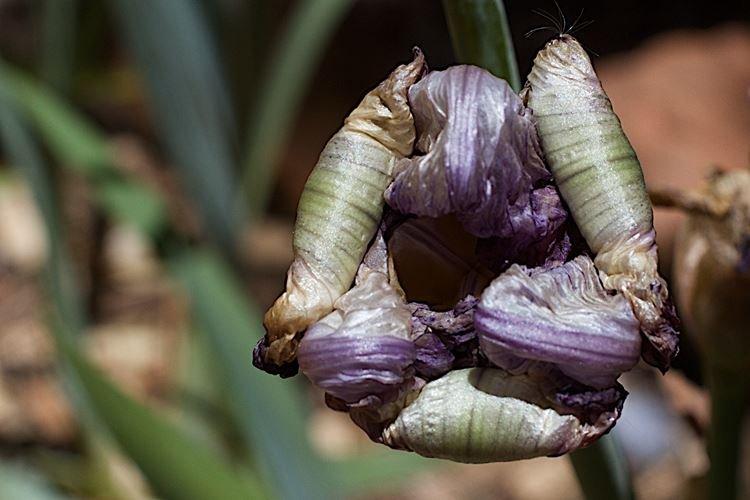
Irises - photo
Irises are one of the most extraordinary flowers in the garden, because they managed to get from Mother Nature both a bizarre shape and an outlandish color. Just look at the photo!
